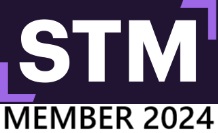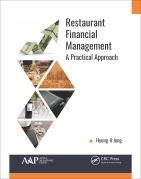|
|
Reviews “Finally we have an accounting/finance book that takes a practical approach. . . . What Dr. Jung has done is give us a textbook that emphasizes the practical skills that operators need to have to be leaders in the industry. I wish that I had this book to learn from when I was a young restaurant manager. It would have made my journey as an operator much easier. It wasn’t until I learned the language of the finance world that I really became successful. Having been an executive with three major corporations (almost twenty years with Walt Disney World Co.), I can tell you that the lessons of this text are crucial for every leader’s ability to achieve their goals. Dr. Jung has laid out the book in an easy-to-follow manner that allows the student to understand the building blocks of accounting and finance. The case study approach allows the learner to absorb the information and realize how to apply it in the world that they will soon be entering. Whether it be revenue, expenses, ROI, or budgeting, the lessons of this text will soon become everyday living for our students. They need this information.” —From the Foreword by Duncan R. Dickson, EdD, Associate Professor, Tourism, Events, and Attractions, Rosen College of Hospitality Management, University of Central Florida, Orlando “A fresh and pioneering effort to provide business practitioners and/or students who have limited knowledge of accounting or finance with a framework that develops a bird’s eye view over business operations by consolidating necessary financial aspects. . . . The book’s strength is the gradual progress that connects the concepts of financial accounting to managerial accounting, and finally to that of financial management. By doing so, this book introduces the entire apparatus of concepts and relevant techniques as tools to use in management decision-making process. For this reason, although it is titled Restaurant Financial Management, this book can also be applied to other types of business.” — Gil Sung Kim, PhD, Dean and Professor, College of Culture and Social Sciences, Chonnam National University Yeosu, Korea Now Available in Paperback This new book, Restaurant Financial Management: A Practical Approach, provides valuable guidance on how to apply the concepts of accounting and finance to real-life restaurant business activities. This book is unique because it provides an understandable framework that breaks it down into three clear steps of applying techniques of accounting and finance to evaluate a restaurant business: It introduces how to consolidate major activities of a restaurant business into useful accounting information. It explains how accounting information is analyzed and then used to forecast the future. And it introduces the methods of projecting the future and determining the current value of a restaurant business. Using this approach, readers can develop useful knowledge on how to relate accounting and finance to a real-life restaurant business. Using an imaginary restaurant business (based on a real restaurant) as an example to demonstrate a series of relevant business activities, the book walks the reader through the steps, giving the reader a bird’s eye view of restaurant financial management. The book introduces various business transactions in simple formats and provides a few necessary sets of analytic tools (or ratios) to measure the effectiveness and the efficiency of the business activities. It covers how those tools are used in forecasting and planning. In the last section of the book, the concept of cash flow is introduced with the techniques of valuing a business. The reason for introducing the concept of cash flow in the last part is that the true value of a business is always determined by its capability of generating cash for its owners. With this practical book in hand, restaurant managers, owners, and students will be able to make ultimate use of accounting information in a financial framework that measures the value of the restaurant business. The volume can also be used as a self-study guide to restaurant accounting and finance. Its aim is to make accounting and finance easy for restaurant managers. Key features
Faculty: Request an examination copy. Email info@appleacademicpress.com with your name, university, course titles, enrollment, current title, and decision date. CONTENTS: About the Authors / Editors: Hyung-il Jung, PhD Associate Lecturer, University of Central Florida, Rosen College of Hospitality Management, Orlando, Florida Hyung-il Jung, PhD, has been teaching at the Rosen College of Hospitality Management of the University of Central Florida since 2005. Before joining the Rosen College, he taught at Roosevelt University in Chicago. Throughout his academic career, he has been emphasizing for students the qualitative interpretation of quantitative data by teaching hospitality financial and managerial accounting, hospitality finance, and feasibility studies. His interest in this line was developed during his days at Florida International University when he was studying for his master’s degree, after which he spent almost ten years in the industry to practice and cultivate his ideas further, working as a systems designer, an operations analyst, and the controller of a few nationwide foodservice companies that served convention centers and big sporting events, such as ball games, Winston Series Stock Car Races, and National Final Rodeo games. His industry career helped him advance his specialty of liaising between operators and the back of the house with structured assistance that combined accounting information and operational data. Dr. Jung earned his PhD degree from Virginia Tech. |

 Follow us for the latest from Apple Academic Press:
Follow us for the latest from Apple Academic Press:
New Book Series: AAP Advances in Materials, Manufacturing & Computational Intelligence Techniques plans to offer a comprehensive exploration of cutting-edge research and applications in various engineering and scientific fields. This multidisciplinary series caters to a wide range of readers, from researchers and academics to industry professionals, providing in-depth knowledge and practical insights into solving complex problems. The series explores into a diverse array of topics, including advanced materials, manufacturing techniques, and computational intelligence. For more information, visit:
Click here
AAP WELCOMES PROF. MOHAMMED KUDDUS, PhD, AS AAP’S NEW ACQUISITIONS EDITOR for books on biotechnology, enzymology, microbiology, bioinformatics, bioremediation, biomedical technology, value-added products etc. Dr. Kuddus is Head of the Department of Biochemistry at the College of Medicine, University of Hail, Kingdom of Saudi Arabia. He is listed in Elsevier/Stanford University World’s Top 2% Scientists. He seeks book proposals from potential editors to consider for publication with Apple Academic Press. Contact: kuddus@appleacademicpress.com for more information. AAP welcomes Dr. Maulin P. Shah as AAP’s new acquisitions editor for books on Applied Microbiology, Environmental Biotechnology and Waste Management. Dr. Shah, a Scientist in the Industrial Wastewater Research Lab at Enviro Technology Ltd., India. seeks book proposals to consider for these topics and related areas: applied microbiology, environmental biotechnology and waste management, including environmental pollution, wastewater treatment, bioenergy, biofuel, circular economy, leachate treatment activated sludge process, environmental microbiology, agricultural microbiology, advance oxidation process, bio-electrochemical systems, bacterial genomics for wastewater treatment, and heavy metal remediation. maulinshah1979@gmail.com for more information. AAP is pleased to announce Shrikaant Kulkarni, PhD, as our new Senior Commissioning Editor for books in the areas of Polymer Sciences, Chemical Sciences, Nuclear Sciences, and Material Sciences. Dr. Kulkarni is Adjunct Professor, Faculty of Business, Victorian Institute of Technology, Melbourne, Australia; and Adjunct Professor, Centre of Research Outcome and Impact, Chitkara University, Punjab, India. You can reach him at Email: srkulkarni21@gmail.com for more information. New Book Series: AAP Series on Waste Biomass Valorization will explore the transformation of biomass resources into valuable products, addressing the growing need for sustainable alternatives to fossil fuels and non-renewable resources. For more information and to propose a book, please visit: Click here Congratulations to Hafiz Ansar Rasul Suleria, PhD, for receiving the Dean’s Award for Excellence in Research from the University of Melbourne, Australia, in recognition for his exceptional performance and strong commitment to advanced research in food science. Dr. Suleria is editor of AAP’s book series Innovations in Plant Science for Better Health: From Soil to Fork. For more information, visit: Click here Congratulations to Dr. Christian Mancas. His book Conceptual Data Modeling and Database Design: A Fully Algorithmic Approach was one of the 6 Best Data Modeling ebooks for Beginners by BookAuthority, a leading site for book recommendations. For more information, visit: Click here COMMENTS FROM AAP EDITORS AND AUTHORS AAP book title: Advances in Audiology and Hearing Science (2-volume set) “I have collaborated with AAP during the process of bringing my two-volume editing work to a final publishing phase. AAP support has been truly important throughout the initial and final stages of the book. While the majority of the publishing work is done at the early stages, the final touches that include the last-minute corrections of the authors are extremely crucial to the quality the book tries to convey. The assistance of AAP during the last stages of corrections and communication with the authors was a very positive contributor to my state of mind during those stressful moments. I recommend the publishing experience with AAP to other editors of scientific material.” —Stavros Hatzopoulos, PhD, Hearing Science Laboratory, University Hospital of Ferrara, Ferrara, Italy AAP book title: Nanotechnologies: The Physics of Nanomaterials (2-volume set) “I was very pleased with the interaction and support of the team at Apple Academic Press. They provided me with regular and useful information and updates throughout the publishing procedure. I am also very happy with the final product, which is of good quality. The books are now available and are professionally distributed through the various channels. I would like again to thank the team at AAP for all their hard work and support.” —David Schmool, PhD, Director, Groupe d’Etude de la Matière Condensée GEMaC, National Centre for Scientific Research, Université de Versailles/Saint-Quentin, Université Paris-Saclay,Versailles, France AAP book title: Physiology of Molluscs (2-volume set) “I have enjoyed the full benefit of support, encouragement, and kindness from the members of AAP I have had the pleasure of being associated with. In the same vein, I hope AAP was satisfied with the book series I have edited in advancing the knowledge. It has been a great journey and was a great pleasure and satisfaction. Advancing scholarship through publications is one of the best routes publishers can take, and I would hold AAP as one of the best ones.” —Saber Saleuddin, PhD, University Professor Emeritus, Department of Biology, York University in Toronto, Ontario, Canada AAP book title: Green Chemistry and Sustainable Technology: Biological, Pharmaceutical, and Macromolecular Systems “It had been my pleasure to work with the production team of Apple Academic Press for almost a decade. The best presentation of our work was due to their hard work and with careful scrutiny. I am sure that every one of them takes extra pains to publish the book nicely, maintaining the quality and timeliness. It was a rewarding experience to work with AAP. I would like to publish more with AAP on my upcoming projects in future also.” —Prof. Suresh C. Ameta, Professor of Eminence (Distinguished Professor), Faculty of Science, PAHER University, UDAIPUR, India AAP book title: New Frontiers in Nanochemistry, 3-volume set, plus many others "Publishing a book, either as author or editor, is a journey from the initial vibration to the piece of knowledge towards the present future of humanity at large. Such a journey is about climbing and tunneling, about diving and driving through, about inspiration and tuning, about hard working in every instance; and it is also about time. Very few Global Publishers have the wisdom and patience and kindness and openness to authors, contributors, and readers while being truly crafting oriented as Apple Academic; yet all is about people and their education, vision and assumed mission; the Apple Academic Team heartily succeed that in achieving the world class scholarly acclaim by the quality involvement in all chain of plus value added with each publishing event. Hearty Compliments! Excelsior Apple Academic!" —Mihai V. Putz, PhD, Dr.-Habil., MBA, Professor, Faculty of Chemistry, Biology, Geography, Laboratory of Computational and Structural Physical Chemistry for Nanosciences and QSAR, West University of Timi?oara; PI-1, Laboratory of Renewable Energies - Photovoltaics, National Research and Development Institute for Electrochemistry and Condensed Matter (INCEM), Timi?oara, Romania AAP book title: The Chemical Century: Molecular Manipulation and Its Impact on the 20th Century “All my experiences with AAP have been very positive. I entrusted AAP with the publication of The Chemical Century: Molecular Manipulation and Its Impact on the 20th Century and found the quality of the book that they produced to be excellent. My two contacts at the company were very responsive and efficient throughout the publication process.” —Richard J. Sundberg, PhD, Professor of Chemistry, University of Virginia, Charlottesville, Virginia, USA AAP book titles: Medical Tourism and Wellness: Hospitality Bridging Healthcare (H2H)© and Medical Travel Brand Management: Success Strategies for Hospitality Bridging Healthcare (H2H) “I have enjoyed my scholarly creative work with Apple Academic Press. They have been timely, creative, and very helpful for my two books with them. I encourage you to consider publishing your work with AAP.” —Frederick DeMicco, PhD, RDN, Executive Director and Professor School of Hotel and Restaurant Management, Northern Arizona University, Flagstaff, Arizona AAP book title: The Chemical Evolution of Phosphorus: An Interdisciplinary Approach to Astrobiology “I’m very pleased with the books you have edited. It shows a very good and careful work by everyone involved along the whole production process, and so the final result is a beautiful piece: it has come out as a very nice and appealing book, easy to handle and read, .... and hopefully of interest for people from diverse related fields!” —Enrique Macia-Barber, PhD, Professor of Condensed Matter Physics, Universidad Complutense de Madrid, Spain |



